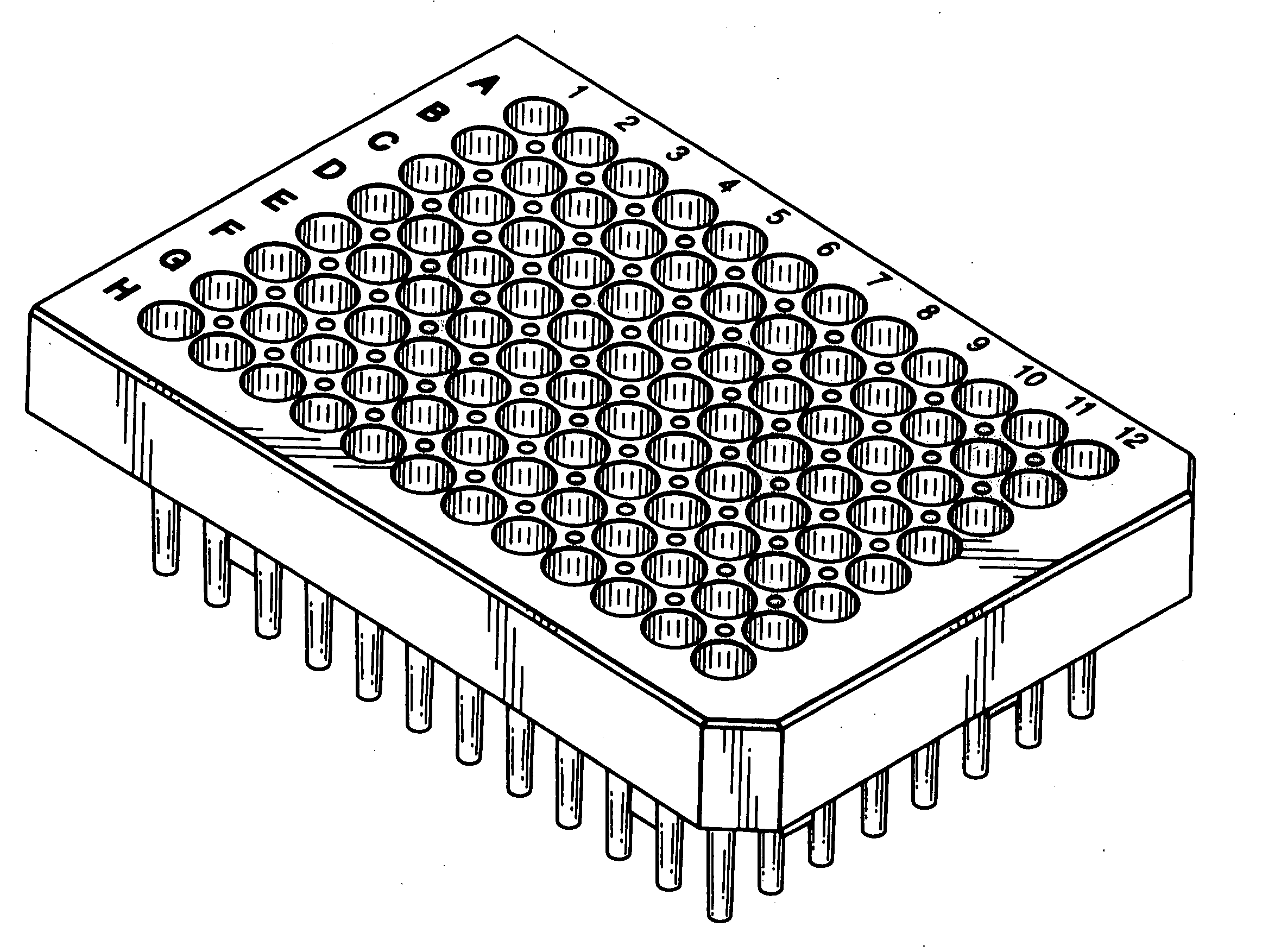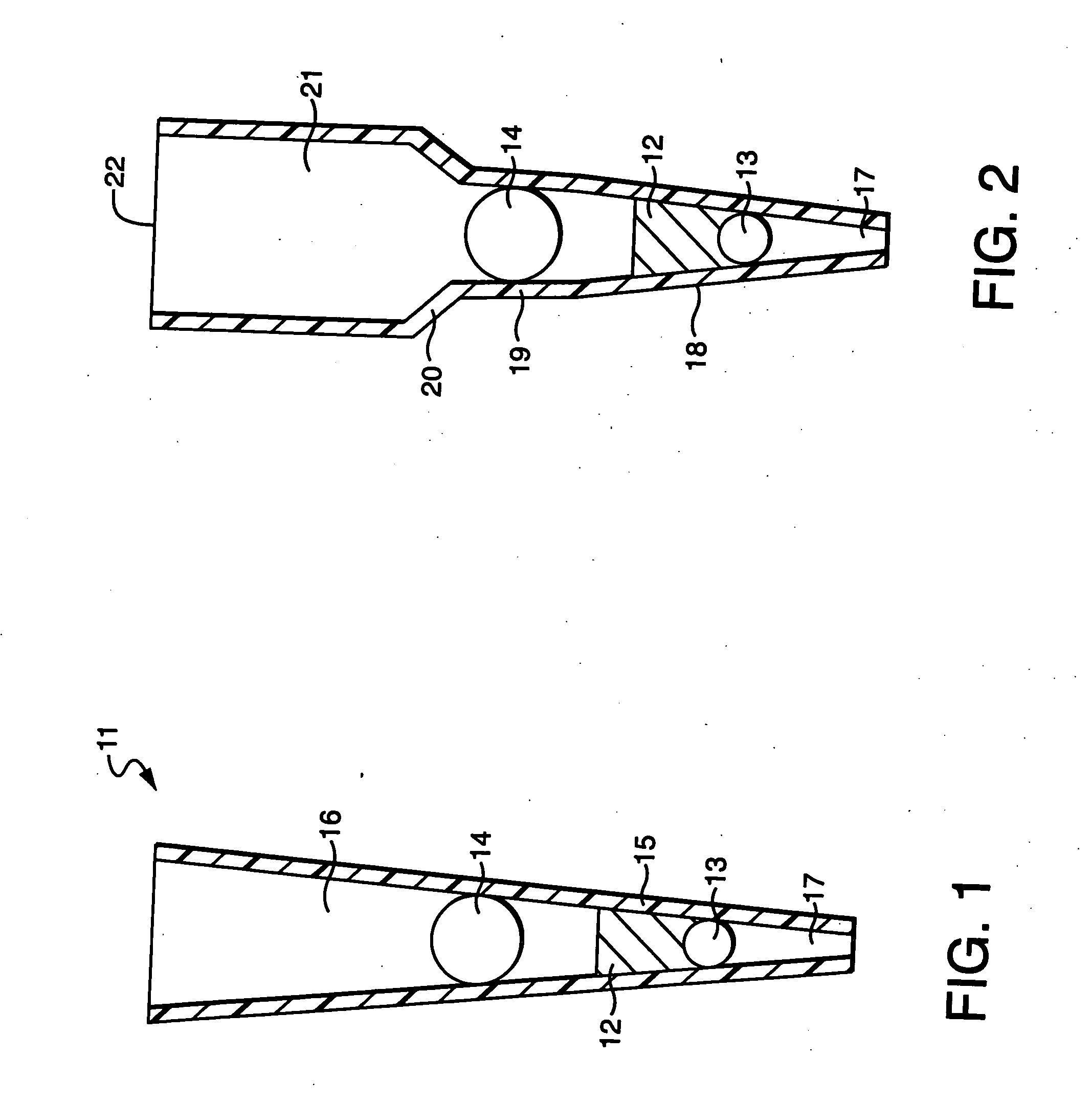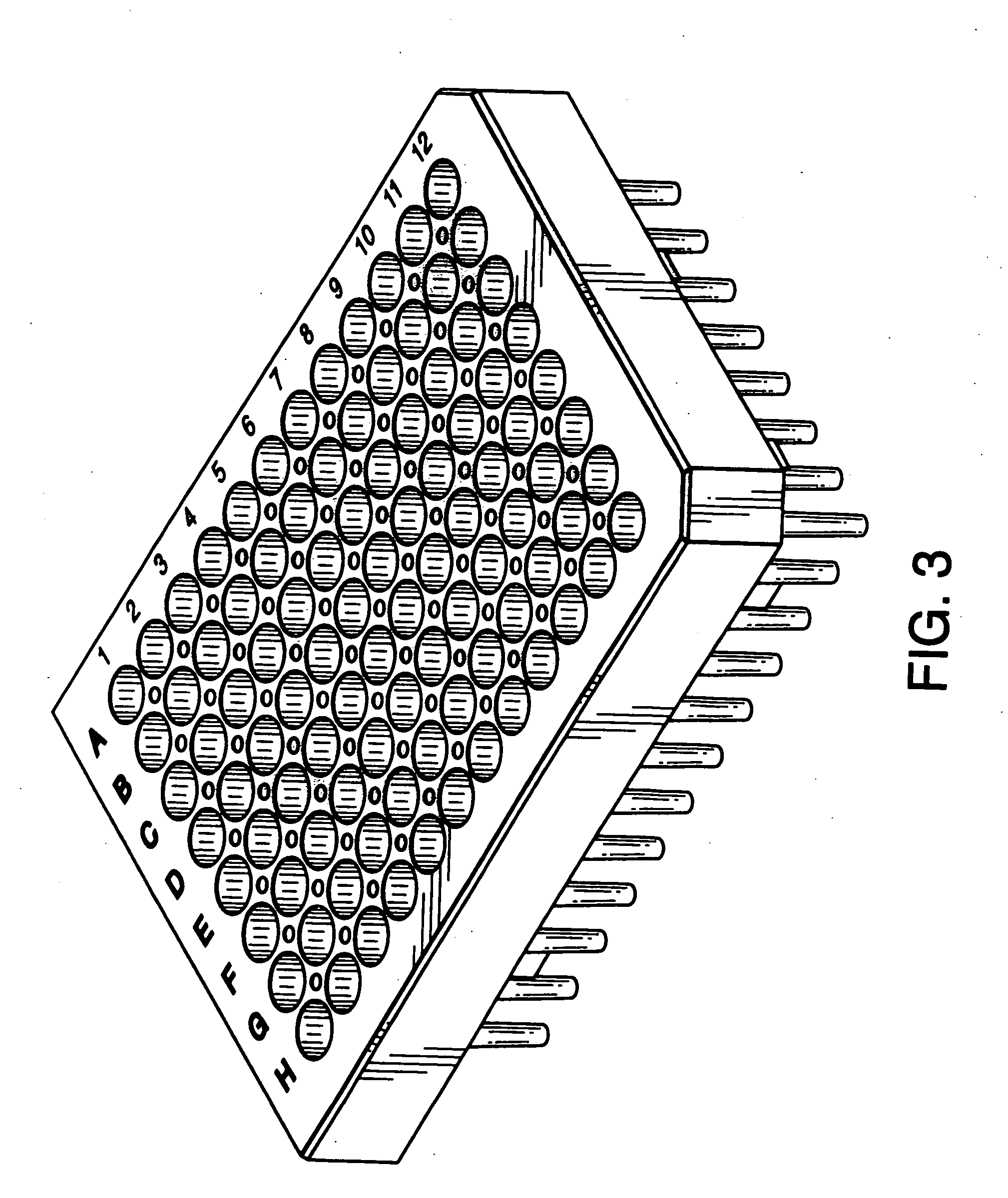Device for solid phase extraction and method for purifying samples prior to analysis
a technology of solid phase extraction and purification method, which is applied in the direction of water/sewage treatment by ion exchange, sulfur-dioxide/sulfuric acid, chemical/physical processes, etc. it can solve the problems of time and effort, trouble, and negative effect on the ability to perform quantitative analysis, and achieve the effect of efficient elution of sample compounds and high efficiency retention of target compounds
- Summary
- Abstract
- Description
- Claims
- Application Information
AI Technical Summary
Benefits of technology
Problems solved by technology
Method used
Image
Examples
example 1
[0045] A spherical porous polyethylene filter having a diameter of 0.075″ is press sealed into a molded well cavity having a 5° included angle taper as shown in FIG. 2. A packed bed is formed within the 5° tapered well using 2 milligrams of Waters' Oasis® HLB, 30 micron sorbent particles. A spherical porous polyethylene filter having a diameter of 0.100″ is press sealed into the upper section of the well which contains a 1° included angle. The upper porous filter acts to both contain the sorbent particles within the well, and to act as a sample pre-filter.
example 2
[0046] A spherical porous polyethylene filter having a diameter of 0.058″ is press sealed into a well having a 5° included angle taper as in EXAMPLE 1. A packed bed is formed within the 5° tapered well using 1 milligram of Waters' Oasis® HLB brand, 30 micron sorbent particles. A spherical porous polyethylene filter having a diameter of 0.100″ is press sealed into the upper section of the well to both contain the sorbent particles within the well, and to act as a sample pre-filter. The resulting device contains one half the amount of sorbent as in EXAMPLE 1, but due to the smaller lower filter size, the bed is positioned lower in the tapered well, with a bed shape that is well suited for effective performance.
example 3
[0047] The SPE device of EXAMPLE 1 is placed on a vacuum manifold station with a collection vial positioned below the exit spout to collect fluids exiting the device. A vacuum of 10″ Hg is applied to draw fluids through the device. The device is first conditioned by passing 100 μL methanol through the device, followed by 100 μL water. A spiked plasma sample is prepared by spiking 250 μL porcine plasma with 1.9 μg of amitriptyline, followed by dilution with 250 μL of 2% phosphoric acid in water. The diluted spiked plasma sample is then drawn through the device. After addition of the diluted, spiked plasma sample, the sorbent bed is washed using 100 μL water. An elution step is then performed by passing 25 μL acetonitrile / methanol (80 / 20 by volume) through the sorbent bed, and collecting into a clean collection vial. The resulting sample mixture contains the target compound, free from plasma interferences, concentrated ten fold. The sample solution may be analyzed directly, or further...
PUM
| Property | Measurement | Unit |
|---|---|---|
| mass | aaaaa | aaaaa |
| volume | aaaaa | aaaaa |
| elution volumes | aaaaa | aaaaa |
Abstract
Description
Claims
Application Information
 Login to View More
Login to View More - R&D
- Intellectual Property
- Life Sciences
- Materials
- Tech Scout
- Unparalleled Data Quality
- Higher Quality Content
- 60% Fewer Hallucinations
Browse by: Latest US Patents, China's latest patents, Technical Efficacy Thesaurus, Application Domain, Technology Topic, Popular Technical Reports.
© 2025 PatSnap. All rights reserved.Legal|Privacy policy|Modern Slavery Act Transparency Statement|Sitemap|About US| Contact US: help@patsnap.com



